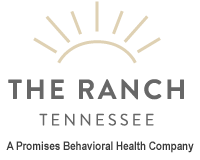If you’re like most people, you probably associate eating disorders with teenage girls or women in their twenties – not women who are middle-aged and beyond. However, a recent study found that the dysfunctional eating patterns typically associated with young women are actually quite common in women who are in the 50+ age group. This is especially true for the women in this group who also worry about their weight. The International Journal of Eating Disorders published the study in June of 2012. The research was conducted under the guidance of Dr. Cynthia Bulik, who heads the Eating Disorders Program at the University of North Carolina. Participants in the study included over 1800 U.S. women who were aged 50 or older, with 59 as the average age. Over 90% of the women in the study were white. The women filled out a survey that included questions about their eating behaviors, weight concerns, and body image. The survey was appropriately titled, “Body Image in Women 50 and Over — Tell Us What You Think and Feel“. 1The study participants’ weight demographics were as follows 1:
- 42% of the women were of normal weight
- 29% of the women were overweight
- 27% of the women were obese
- 2% of the women were underweight
Considering the vast majority of women who are in their fifties or beyond have gone through menopause, unwanted weight gain – which is often triggered or exacerbated by the hormonal changes that occur as a result of menopause – is very common. Many menopausal and post-menopausal women find it much harder to lose weight as they get older. Even many women who had always been slender prior to age 50 find that they gradually begin to gain weight later in life. This can be distressing for any woman, especially in a society that idealizes thinness. It shouldn’t come as any big surprise that over 70% of the women in the survey reported that they were attempting to lose weight. And, as would be expected, a significant percentage – 62% to be exact – reported that their lives were being negatively affected by their body shape or weight. No surprise either that almost 4 out of 5 women in the study also indicated that their body shape or weight also impacted their self-image. And, nearly two-thirds of the participants had issues with their appearance, being the most distressed about their stomach and / or their shape. 1 The findings that were surprising – or at least very interesting – however, pertained to the degree of eating disordered behaviors found in this group of women over 50. No one is shocked to hear of a 13-, 17-, or 25-year old female using laxatives or taking diet pills in a desperate attempt to lose a few pounds. But women 50 years and older doing this sort of thing? Well, according to the survey, approximately 8% of these women had resorted to purging at some point in the previous 5 years 1. (In clinical terms, purging refers to self-induced vomiting, or the use of laxatives or diuretics.) The study also found that in the month prior to the survey, 3.5% of the women had engaged in binge eating. Excessive exercise and the use of diet pills were used by 7% and 7.5% of the participants, respectively. 1 The findings of this study are important for both medical and mental health professionals. Both need to be aware of the potential for eating disorder symptoms in their more mature female patients, rather than tending to assume that only younger women struggle with these unhealthy patterns of behavior. Although this study did not include males in the 50+ age group, it’s important to note that eating disorders are not as uncommon in males as once thought. It would be interesting to see the results of a similar survey for men in the 50+ age group. The two most common eating disorders are anorexia nervosa and bulimia nervosa, both of which can have serious health consequences if not treated. Binge-eating disorder, which has previously been diagnosed as an unspecified eating disorder (eating disorder NOS), will be included as an official diagnosis in the newest edition of the diagnostic manual (the DSM) used by mental health professions. The DSM-5 is scheduled for release in May 2013. While psychotherapy is a primary treatment for eating disorders, medical treatment is often needed as well. This is especially true for individuals with moderate to severe anorexia nervosa, which can take a serious – and even fatal – toll on the body. Outpatient, residential, and inpatient programs that specialize in the treatment of eating disorders are available throughout the U.S. Reference: 1//www.sciencedaily.com¬ /releases/2012/06/120621070915.htm


